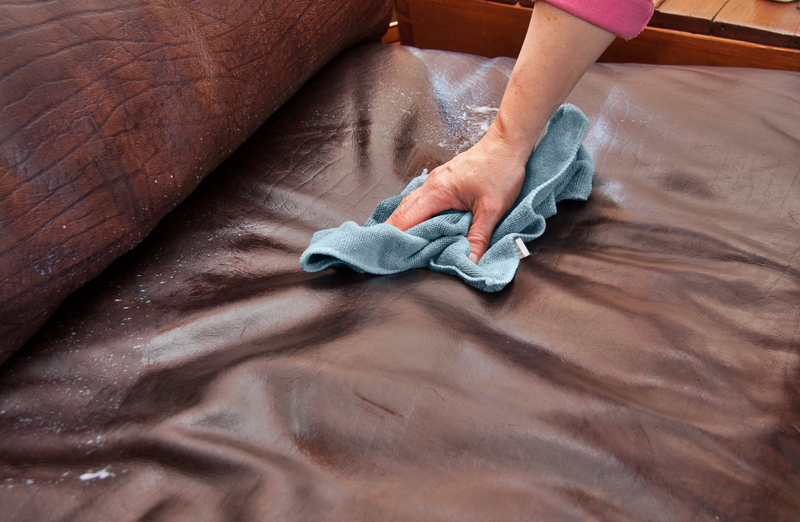Expert Tips for Mould-Free Window Sills
Posted on 31/05/2025
Expert Tips for Mould-Free Window Sills
Keeping your window sills mould-free is essential for preserving indoor air quality, maintaining your home's appearance, and ensuring the longevity of your windows. Mould, a type of fungus, can thrive in moist and warm environments, and window sills are especially vulnerable due to condensation, leaks, or poor insulation. In this comprehensive guide, you'll discover the best expert tips for mould-free window sills, how to prevent mould from returning, and what to do if you already spot signs of it.
Why Do Window Sills Get Mould?
Mould grows wherever there is moisture and inadequate ventilation. Window sills, being a meeting point of the indoor and outdoor environments, are frequent trouble spots.
- Condensation: Warm indoor air meeting cold glass surfaces creates condensation, which settles on window sills.
- Poor Ventilation: Without proper airflow, moisture lingers, encouraging mould formation.
- Water Leaks: Gaps in window frames or damaged seals allow rainwater to seep in, making the sills damp.
- Lack of Cleaning: Dust and organic material on window sills provide food for mould spores.

Recognizing the Signs of Mould
Before you can remove or prevent mould, you need to recognize its symptoms. Signs of mould on window sills include:
- Black, green, or brown spots or fuzzy patches on the sill's surface or around the window frame
- A musty, damp odor near the window area
- Peeling paint, bubbling finishes, or rotting wood
- Condensation or visible moisture on or near the sill
Early detection is crucial for effective treatment and to keep mould from spreading to other parts of your home.
Expert Prevention Strategies for Mould-Free Window Sills
Prevention is always better than cure. To keep your window sills free from mould, follow these tried-and-tested expert tips.
1. Control Indoor Humidity
- Maintain ideal humidity levels: Indoor humidity should be kept between 30% and 50%. Use a hygrometer to monitor moisture levels.
- Use Dehumidifiers: Especially in high-humidity areas or rooms with poor ventilation, a dehumidifier can keep moisture in check.
- Ventilation: Open windows regularly or use extractor fans in kitchens and bathrooms to reduce condensation.
Reducing moisture in the air is the single most important step for mould prevention.
2. Improve Air Circulation
- Use Ceiling or Oscillating Fans: Fans help circulate air and prevent moisture build-up around windows.
- Don't Block Vents: Ensure that radiators, heaters, and air vents are not obstructed by furniture or heavy curtains.
- Keep Blinds and Curtains Open: Natural airflow and sunlight inhibit mould growth.
3. Ensure Proper Window Sealing and Insulation
- Check Seals and Caulking: Inspect window frames for cracks, gaps, or failing caulking. Reseal any leaks promptly.
- Upgrade Windows: Consider double glazing or energy-efficient windows to reduce temperature differences and condensation.
- Add Weatherstripping: This prevents drafts and keeps moisture out.
Good insulation means fewer cold spots for condensation to form on and around your window sills.
4. Clean Regularly and Use Mould-Inhibiting Products
- Routine Cleaning: Wipe down window sills weekly with a mild soap solution or a multi-surface household cleaner.
- Use Vinegar: Vinegar is a natural, non-toxic fungicide. Spray undiluted white vinegar onto the window sill, wait an hour, and wipe away.
- Mould-Resistant Paints: If repainting your window sills, select anti-mould or mildew-resistant paint for added protection.
Consistent cleaning habits can make a major difference to mould prevention.
5. Address Water Intrusion Quickly
- Fix Leaky Windows Promptly: Any water entering from outside will almost guarantee mould growth. Repair or replace faulty windows as soon as possible.
- Check for Roof or Gutter Issues: Overflowing gutters and damaged roofing can cause leaks that affect window sills.
How to Remove Mould from Window Sills
If you spot mould, it's important to act immediately. Here's how to safely clean and remove mould from window sills:
1. Gather Your Supplies
- Protective gloves and mask (to avoid breathing in mould spores)
- Soft brush or old toothbrush
- Microfiber cloths
- White vinegar or hydrogen peroxide
- Baking soda (for stubborn patches)
- Mild detergent or specialized mould remover
2. Cleaning Steps
- Ventilate the Area: Open windows for fresh air.
- Apply Cleaning Solution: Spray vinegar or a mould remover directly onto the affected area. Let it sit for at least one hour.
- Scrub Gently: Use your soft brush to work the cleaning solution into any cracks or crevices.
- Rinse and Dry: Wipe the area thoroughly with a clean damp cloth. Dry completely to prevent further growth.
- Baking Soda for Stains: Sprinkle baking soda on tough spots, scrub, and rinse again.
3. Dispose of Contaminated Materials
Wash or discard any cloths or sponges used, as they can harbor mould spores. Always wash your hands thoroughly after cleaning.
Natural Solutions to Prevent Window Sill Mould
If you prefer chemical-free cleaning, several natural solutions for window sill mould exist:
- Tea Tree Oil: Mix one teaspoon in a cup of water, spray on, and leave - no need to rinse.
- Baking Soda Paste: Combine with water to form a paste. Apply to the sill, let sit, then scrub and wipe clean.
- Lemon Juice: Acts as a mild disinfectant and leaves a fresh scent.
Natural remedies can be just as effective, especially for small or early outbreaks.
When to Call a Professional
For minor infestations, DIY cleaning is sufficient. However, if:
- The mould covers more than a square meter
- You suspect mould beneath window frames or inside walls
- There is a persistent musty smell in the room
- Family members have health issues aggravated by mould (allergies, asthma)
Consult a professional mould remediation company for safe removal. Extensive growth can indicate structural damp issues best handled by experts.
Mould Prevention Tips for Different Window Types
Different windows require customized care for optimal window sill mould prevention:
Timber Window Sills
- Treat with suitable timber sealants to repel moisture.
- Repaint or re-varnish periodically using anti-mould coatings.
- Fix any cracks or rot immediately to avoid spreading.
UPVC and Metal Window Sills
- Clean with non-abrasive cloths to avoid scratching the surface.
- Pay attention to joints and seals, reapplying caulk as necessary.
- Use a vinegar-water solution for safe, non-toxic cleaning.
Best Practices for Long-Term Protection Against Window Sill Mould
- Annual Inspections: Check window sills and frames seasonally for signs of leaks, condensation, or mould.
- Weatherize Your Home: Insulate attics and replace any single-pane windows to minimize indoor temperature fluctuations.
- Use Moisture Absorbers: Silica gel packs or moisture-absorbing crystals near windows can help prevent dampness.
- Install Window Ventilators: Specially designed vents in window frames can provide continuous airflow.
Integrating these practices into your cleaning routine ensures your windows remain mould-free year-round.
Expert Advice for Families and Allergy Sufferers
For homes with young children, elderly residents, or anyone suffering from allergies, a mould-free window sill is vital. Here are some additional tips:
- Use HEPA filters in your home's air handling system to reduce mould spores in the air.
- Consider mould-resistant blinds or curtains instead of fabric drapes that can trap moisture.
- Keep windows closed on humid, rainy days to prevent extra moisture from entering.
- If a room remains damp, consider using a desiccant (such as silica gel pouches) near the windows.

Frequently Asked Questions about Mould-Free Window Sills
How often should I check my window sills for mould?
Experts recommend inspecting window sills monthly, especially through the winter or rainy seasons, when condensation is most common.
Are there any commercial products specifically for window sill mould prevention?
Yes, there are several commercial anti-mould sprays, mould-inhibiting paints, and caulks designed for use on windows and sills. Look for products labeled "mildew-resistant" or "anti-fungal" for added protection.
Can mould on window sills affect my health?
Even small amounts of mould can cause allergic reactions, respiratory discomfort, or worsen asthma, particularly in sensitive individuals. Always address mould promptly for a healthier home environment.
Is bleach effective for cleaning window sill mould?
While bleach can kill surface mould on non-porous materials, it's less effective on porous surfaces like wood and can damage the finish. Vinegar and hydrogen peroxide are generally safer alternatives.
Summary: Keeping Your Window Sills Mould-Free
Creating mould-free window sills is about persistent prevention, prompt action when mould appears, and maintaining good ventilation and cleanliness. Remember these essential tips:
- Keep moisture levels in check to prevent the conditions that support mould growth.
- Inspect, clean, and repair. Consistent attention is the key to long-lasting protection.
- Use safe cleaning solutions and don't hesitate to seek professional help for extensive or recurring mould issues.
By following these expert tips for mould-free window sills, you'll ensure your home remains healthy, attractive, and safe for everyone living in it!




 Rug Cleaning
Rug Cleaning  Steam Carpet Cleaning London
Steam Carpet Cleaning London  Upholstery Cleaning Services
Upholstery Cleaning Services